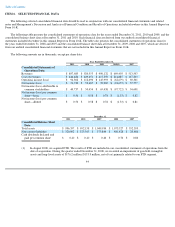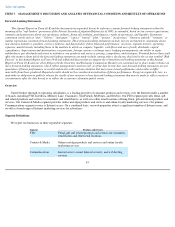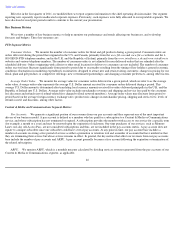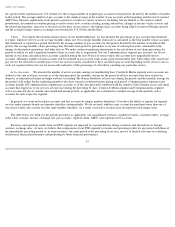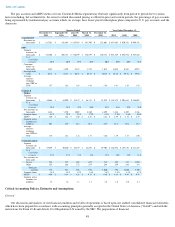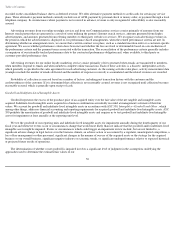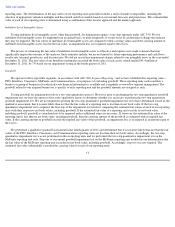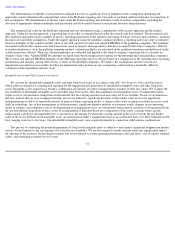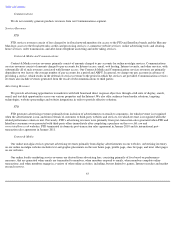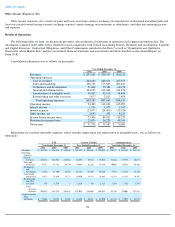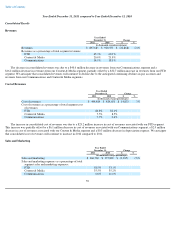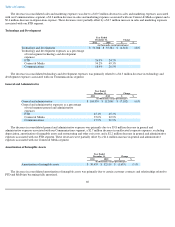Classmates.com 2011 Annual Report Download - page 54
Download and view the complete annual report
Please find page 54 of the 2011 Classmates.com annual report below. You can navigate through the pages in the report by either clicking on the pages listed below, or by using the keyword search tool below to find specific information within the annual report.
Table of Contents
reporting units. The determination of the fair values of our reporting units generally includes a study of market comparables, including the
selection of appropriate valuation multiples and discounted cash flow models based on our internal forecasts and projections. The estimated fair
value of each of our reporting units is determined using a combination of the income approach and the market approach.
Indefinite
-Lived Intangible Assets
Testing indefinite-lived intangible assets, other than goodwill, for impairment requires a one-step approach under ASC 350. We test
indefinite-lived intangible assets for impairment on an annual basis, or more frequently, if events occur or circumstances change that indicate
they may be impaired. The fair values of indefinite-lived intangible assets are compared to their carrying values and if the carrying amount of
indefinite-lived intangible assets exceeds the fair value, an impairment loss is recognized equal to the excess.
The process of estimating the fair value of indefinite-lived intangible assets is subjective and requires us to make estimates that may
significantly impact the outcome of the analyses. Such estimates include, but are not limited to, future operating performance and cash flows,
royalty rate, terminal growth rate, and discount rate. We did not record any impairment charges related to our intangible assets in the year ended
December 31, 2011. The fair value of our Interflora trademarks exceeded the book value of such assets, which totaled $43.4 million at
December 31, 2011, by 7% based on our impairment testing in the fourth quarter of 2011.
Goodwill
We operate in three reportable segments, in accordance with ASC 280, Segment Reporting , and we have identified five reporting units—
FTD, Interflora, Classmates, MyPoints, and Communications—for purposes of evaluating goodwill. These reporting units each constitute a
business or group of businesses for which discrete financial information is available and is regularly reviewed by segment management. The
goodwill related to our acquired businesses is specific to each reporting unit and the goodwill amounts are assigned as such.
Testing goodwill for impairment involves a two-step quantitative process. However, prior to performing the two-step quantitative goodwill
impairment test, we have the option to first assess qualitative factors to determine whether it is necessary to perform the two-step quantitative
goodwill impairment test. We are not required to perform the two-
step quantitative goodwill impairment test if we have determined, based on the
qualitative assessment, that it is more likely than not that the fair value of a reporting unit is less than its net book value. If the two-step
quantitative impairment test is required, the first step of the impairment test involves comparing the estimated fair values of each of our reporting
units with their respective net book values, including goodwill. If the estimated fair value of a reporting unit exceeds its net book value,
including goodwill, goodwill is considered not to be impaired and no additional steps are necessary. If, however, the estimated fair value of the
reporting unit is less than its net book value, including goodwill, then the carrying amount of the goodwill is compared with its implied fair
value. If the carrying amount of goodwill exceeds the implied fair value of that goodwill, an impairment loss is recognized in an amount equal to
the excess.
We performed a qualitative goodwill assessment in the fourth quarter of 2011 and determined that it is not more likely than not that the fair
values of the FTD, Interflora, Classmates, and Communications reporting units are less than their net book values. Accordingly, the two-step
quantitative impairment test was not performed on these reporting units and we performed the two-step quantitative impairment test on the
MyPoints reporting unit only. Step one of our annual goodwill impairment test on the MyPoints reporting unit resulted in our determination that
the fair value of the MyPoints reporting unit exceeded its net book value, including goodwill. Accordingly, step two was not required. The
estimated fair value substantially exceeded the carrying value for each of our reporting units.
51




